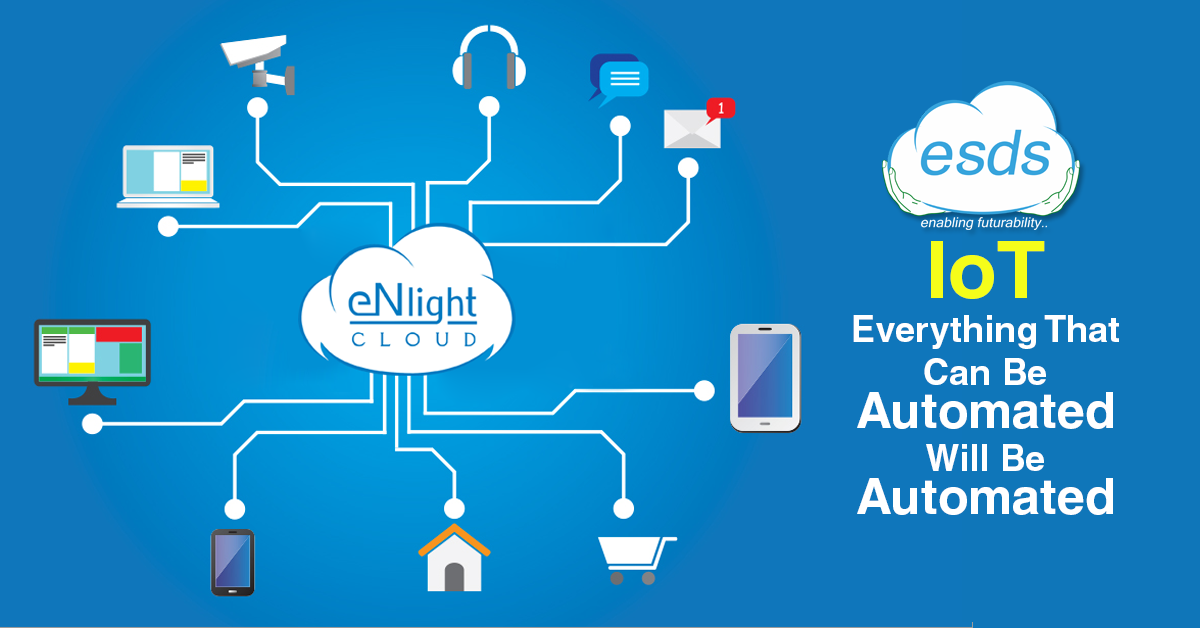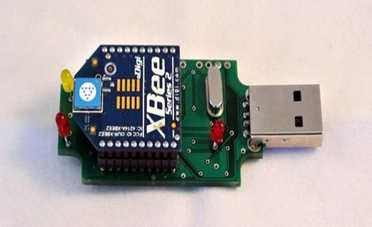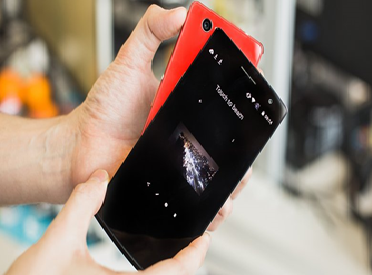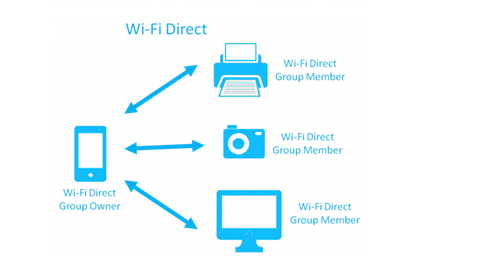Internet of Things (IoT)
Internet of Things
The Internet is a large network of interconnected computers spread across the world. It has been a channel hosting multiple avenues of services and information. People are now connected to each other like never before. Why limit ourselves to only human-to-human network? Isn’t it a great idea to connect everything in a network so that we get real-time information and thus automate tasks? “Internet of Things (IoT)” is currently the most discussed topic which contemplates automation and has potential to impact human lives in the near future.
Let’s understand more about the domain:
What is IoT?
IoT is a big network wherein any device (or almost anything) with an Internet Protocol (IP) address is connected to the internet (or to each other) to automate tasks or limit human intervention. The devices can be mobile phones, watch, lights, Television sets, machines in the factories, vehicles, mountains etc. which can have a configured computer chip, software and electronic sensors are embedded in it. It can also be living things like animals on a farm, birds, humans etc.
Example:
A smart home where the music system senses the mood of a person and plays the particular genre.
A smart city where the municipality monitors and administers the whole city through a big network laid for the purpose. Any defects in roads, buildings, drainage are automatically sensed and then repaired in a short amount of time. City’s public transport system instantly notifies the change in the schedule to the users. Public utilities for fire control, ambulance and police are instantly notified of the adverse cases so that they can take quick actions.
Is IoT a new concept?
Not exactly, devices like personal computers (PC), mobile phones etc. have been communicating with each other since the 1970s. We have also seen electronic sensors automatically operating the machines, raising alarms etc.
Example:
An action detected by a motion sensor installed in a restricted area will raise an alarm in the security agency which is at another location. Close Circuit Television (CCTV) monitors and communicate the data to the administrator remotely and it is not something new to the people. Till now there has been many cases but no one used the term ‘IoT’ specifically, but only now the term has emerged.
What are the components of IoT?
A typical IoT environment has following components:
- Physical objects.
Things that are connected in a single network. Example: A car, a building, an animal etc.
- Sensors
A hardware which senses the environment around a physical object.
Some types of sensors are:
Accelerometers: Used for sensing temperature.
Magnetometers: Used for sensing proximity.
Gyroscopes: Used for sensing image.
- People.
Who controls the IoT via mobile or computer application software.
- Services.
The central services are used to process large amount data collected by a device, provide analytics and host the entire IoT ecosystem. CLOUD COMPUTING services are popularly used in IoT.
- Network.
IoT components use a wired or wireless computer network to connect and communicate with each other in the IoT ecosystem.
How does the IoT communicate?
The IoT uses standard communication technologies and protocols. Some protocols fit for the IoT are:
- Near field communication (NFC)
It is a protocol for communication between electronic devices, typically mobile devices, which are held very close to each other.
- Radio frequency Identification (RFID)
IoT uses radio transmitter-receivers to identify and track objects which have RFID tags embedded in them.
Example: Prepaid travel cards of Delhi metro rail service. The card is to be scanned by the RFID scanner on the railway station and your account is automatically credited/debited.
- Radio protocols.
These technologies are low-power but offer high throughput power of small local device networks without the typical costs.
Example: ZigBee, Z-Wave, Thread etc.
- LTE-A.
LTE-A is an advanced version of LTE technology. It increases the coverage area and reduces latency rate.
- Wi-Fi direct.
It does not need an access point. It allows peer-to-peer (P-P) connections with the speed of Wi-Fi.
What are the application areas of IoT?
IoT can be implemented in the domains like engineering, medicine, agriculture, governance, to name a few.
- Home/workplace:
IoT in our home or workplace can help automate things helping us to be more comfortable and increase productivity.Example: At the entry gate of your office, face recognition system (in IoT) recognizes your face and allows you to enter. Now according to your previously set preferences the lights, Air conditioner (AC), music system etc. are automatically recalibrated. Your computer system will also show the logs of visitors, while you can also monitor the same for your home.
- Engineering:
IoT provides monitoring and control of various processes in industries with more accuracy, efficiency and less cost. Example: In a manufacturing unit, if a change in manufacturing policy is notified, all the production robots that are connected in IoT would re-program themselves to meet the new standards. Example: IoT helps municipalities to monitor city roads, buildings and other infrastructure. It can also help them to monitor the environment in the overall city administration.
- Medicine:
IoT can prove beneficial in the medical field. It can enhance medical care research by creating a network of medical devices.Example: A sick man calls a hospital. The call attendant fetches all the medical history of that person from a central database. Now the sensors near the patient analyses the current condition and displays it on the doctor’s computer. The doctor will then prescribe medicines accordingly.
- Agriculture:
IoT in agriculture can help in automating the tedious tasks that otherwise require more human efforts. It can help in analyzing the soil, water, fertilizer levels etc. required for the production.Example: A smart farm where the milch animals have been connected with ICs to provide them identities (IP address). These animals while roaming on the fieldwill collect the data like soil’s moisture, salinity, pest level etc. helping the farmers receive accurate data.
- Governance:
IoT can be used in city planning, administration, policies and providing better facilities to the citizens.Example: The city police have identified zones which have high crime rates and those areas with low crime rates. An unusual behaviour in these areas alerts the police and they can take necessary actions or even prevent crime.
IoT as a service
Technology companies, having known the benefits of IoT, have started providing IoT solutions as a service. Popular platforms that are designed specifically for IoT are:
- Thingworx is a platform to develop and deploy IoT with an intuitive Graphic User Interface (GUI). It hosts a wide range of development tools for analysis, connectivity, distribution and support interoperability.
- Salesforce IoT cloud provides a platform to quickly connect devices to IoT and processes the data collected from devices, websites, people etc. Eclipse IoT is a platform of tools to create IoT based on open source technologies. Eclipse Smart home project and eclipse SCADA are popular open source implementation based on eclipse IoT.
- Amazon web services (AWS) IoT is a platform that uses various AWS services to build and manage IOT ecosystem.
- Microsoft Azure IoT hub is a platform that provides cloud storage, machine learning, data analytics and other tools to provide a complete solution for IoT.
- Bosch IoT service provides flexible, open source solution on cloud to implement IoT.
- Cisco Virtualized Packet Core (VPC) provides virtualized networking solution allowing scalability and faster deployment. It provides solutions of 4G, 3G, 2G, Wi-Fi etc.
- Contiki is an operating system designed specifically to implement IoT and uses the devices with limited resources (limited power, memory etc.).
What are the advantages of IoT?
IoT has a lot to offer in almost every domain we can think of. Following are the significant advantages of IoT:
- Accuracy
IoT generates a large amount of data. The more the information is analyzed, the easier it is to make right decisions and do tasks accurately. IoT seeks to eliminate the errors caused by humans thus, it promises a level of precision.
- Time-saving
IoT saves a lot of time by automating the tasks which are otherwise very time-consuming.
- Monitoring
IoT helps to monitor things in the real time. We can know the availability of things instantly and track them whenever we want.
- Capital
It is the most important aspect to consider. IoT brings in automation, which can replace human beings.
What are the disadvantages of IoT?
IoT faces following major challenges:
- Security and privacy
IoT continuously communicates and collects information on a network. An Attack on the network can affect the critical IoT deployments. .
As IoT seeks detailed information about the things, they expose a risk of compromising an individual’s privacy IoT poses risks of Identity theft: Data of IoT devices is openly available.There can be Data theft where unscrupulous elements steal the data and misuse it.
- Complexity
The IoT ecosystem is complex to design, deploy and maintain. Moreover, A Faulty design of its components can fail the important systems leading to disaster.Example: A water dam operating automatically in IoT. If the water levels are sensed incorrectly and the gates are opened instead of rotation of turbines, a city can be rendered flooded.
- Interoperability between components
There is no particular standard followed in IoT. Therefore Interoperability between the components from different manufacturers is a challenge.
- Social disorder
This is not a technical concern but can be a major ill-effect in the society. IoT promoting automation will replace the humans in many activities and lead to joblessness. This might create a disorder in the society.
IoT promises more comfort and ease in the lives of humans. It gives endless opportunities to provide solutions to some of the common problems faced by us. With all its impressive advantages, there are multiple aforementioned challenges. IoT can be leveraged to solve the mundane problems. IoT should be taken only as a utility and any kind of dependence on it can have serious consequences. The risks, however, can be mitigated by practising diligent security measures. Today, broadband internet is widely available, the connectivity has reached almost everywhere, devices are being manufactured with sensors built into them and technology costs are going down supporting the IoT. IoT has become a billion-dollar industry and certainly is poised to triple in the near future given its capabilities and integration with technologies like Machine Learning, Cloud Computing.
- Apache versus NGINX – Which Open Source Web Server Software you should choose - April 30, 2018
- Understanding OpenStack - April 30, 2018
- Here is everything you need to know about BlockChain - April 17, 2018




